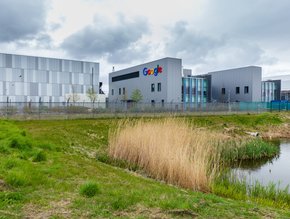Data centres and dirty fuel

On an almost daily basis media reports speak of changes to the global energy mix to deliver the electricity on which we all rely. Airwaves and websites are full of stories about countries reporting how much of their power for a previous quarter or month came from renewables. Government and non-government agencies regularly update forecasts on how much power will come from solar PV, wind or tidal by 2023, 2025, or 2030.
In essence, what they are all covering is the transition that is happening in the energy sector as it shifts from dirty, high CO2e content fossil fuels to zero or low GHG-emitting energy sources. This represents a revolution for the entire energy sector.
The energy used to power everything, including data centres, will increasingly come from renewables. In terms of the fuel mix for generating electrical power, many countries have already committed to phasing out the use of coal in favour of an increasing reliance on nuclear, gas and renewables.
“We can expect increased use of electricity in buildings, industry and transport to support decarbonisation. Investors are already shifting away from fossil fuels. Proven technologies for a net-zero energy system already largely exist today. The total energy transition investment will total US$131trn between now and 2050.” said the IRENA (International Renewable Energy Agency) World Energy Transitions Outlook Report.
For a high-power use sector such as data centres, the same forces that are changing attitudes to diesel as a fuel for transportation – air quality and emissions – will also drive the sector to evaluate alternative technologies rather than persist with a continued reliance on diesel fuel for on-site back-up and standby or secondary power generation.
Any shift away from a reliable, proven back-up solution has many implications. But as the grid supply shifts to renewables, it will be the data centres themselves that must find clean ways to ensure that an intermittent method of power generation can be handled by on-site equipment.
There are two imperatives at play:
- Power must continue to be made available for traditional back-up, while data centres evolve as demand-side response suppliers of power back to the grid.
- Any kind of data centre energy generation for grid support will need to be low or zero carbon.
We need to talk about diesel
The question then becomes what should data centre operators do about diesel and diesel generators? This is not theoretical. The forces that will pull data centre operators away from diesel are growing.
Regulations covering the use of diesel generators have always existed and the use of diesel is already covered by directives on carbon emissions, air quality and noise. Now the scope of regulations are being expanded through directives such as the Medium Combustion Plant Directive (MCPD) and Specified Generator Controls.
“MCPD applies to all combustion plants between 1 and 50 MW (equivalent to generators with output from 300kW to 20MW electrical). So, if you have any generators with an electrical output above about 300kW, then you are in scope. If you are a large installation where the aggregated generating capacity is over 50MWth, approx. 17 MW electrical, then diesel power generation is considered under an Industrial Emissions Directive (IED) environmental permit (EP) which will relate to the generator combustion activities and the associated diesel storage. A bespoke EP will be required for operation of the generators and for the associated diesel storage,” says the TechUK Road Map for Data Centre Operators, Understanding Compliance Obligations for Combustion Plant Emissions.
Already the use of diesel is being restricted to make it less economically attractive. The latest UK budget made use of red diesel, which carries lower tax than white diesel, prohibited by cutting the type of industries where it can be used. Data centres are off the list.
According to the TechUK road map on using diesel generators the regulations are already complex and many of the requirements are new territory for data centre operators. For example, it says Thermal input (MWth/MW thermal): “Thermal input means the rate at which fuel can be burned at the maximum continuous rating of the appliance multiplied by the net calorific value of the fuel and expressed as megawatts thermal. This is an unfamiliar concept to many data centre operators because they think of generating capacity in terms of electrical output and not thermal input. We need to know the thermal input to understand the emissions associated with the generator.”
Depending on the location of the data centre, it is unlikely that running diesel generators for hundreds of hours per year for on-site generation is a viable option. Diesel engines have high emission factors and therefore are unsuitable as an environmentally sustainable energy source for grid support.
Data centres moving from diesel to gas
Transitioning to gas engines may become the preferred option for data centres. Although gas-based engines are relatively new in the data centre sector, it is evident the industry is beginning to move towards gas as a replacement for diesel engines.
“Substituting diesel engines with low-carbon alternatives such as gas reciprocating engines or turbines in conjunction with sustainable energy storage devices will enable many data centre owners to reduce their carbon footprint, and gain additional income derived from the various grid support schemes. Gas-driven generators have low NOx and SOx emissions, so they are generally permitted for unlimited use. Conversely, standby diesel generators are generally required to operate for only a few hours a year.”
There is a need to find ways to store sufficient energy for many hours of operation or invest in on-site generation with direct access to a low carbon fuel. Or both.
Battery technology is usually implemented to provide ride-through power during short duration utility power events, or minutes of UPS back-up power to support the transition to emergency power in the event of an outage. To scale battery storage to make it a primary back-up power source would have significant cost, operational and environmental implications. Whether Li-Ion or VRLA, battery chemistries in the main have a significant environmental production cost, while end-of-life disposal and recycling challenges remain.
Transitioning to natural gas (including blended NG and H2) can provide comparable levels of reliability and availability to diesel for load support. Gas can also be used to generate low-carbon power which, when fed back into the grid, can reduce the strain at times of high or peak demand. Of-course, where the data centre wants to use its power generating capacity to deliver bi-directional power flow and sell low carbon energy back to the grid, it must comply with local grid codes.
According to a white paper published by Caterpillar, a leading manufacturer of industrial diesel engines: “Direct replacement of diesel generator sets with gas generator sets is an ideal solution. While it’s a common perception that gas units would fall behind in their load acceptance capabilities compared to their diesel counterparts, recent developments in gas engine technology have led to numerous breakthroughs in engine performance and have significantly improved their ability to accept load.”
Caterpillar also suggests that a hybrid solution where gas generation supports base loads while critical load back-up remains diesel based. Any conversion could be incremental, leading to either a hybrid diesel and gas environment or a full diesel to gas conversion.
The global context
The use of diesel as a vital fuel for freight and commercial transportation as well as other industries won’t end overnight. But diesel and even petrol driven cars will eventually all but disappear. The direction of travel is clear.
In terms of its future as a standby source of power for data centres, the roadmap for diesel looks like one of increasing restrictions on use, tougher tax regimes, lower emissions targets, improved air quality requirements and lower noise regulations.
All point to a complete re-evaluation of diesel.
Given the continued need for availability that demands provision of the same level of back-up protection enjoyed today, and the new opportunities to be part of the broader energy revolution, the transition from diesel to gas in the data centre should be considered.






